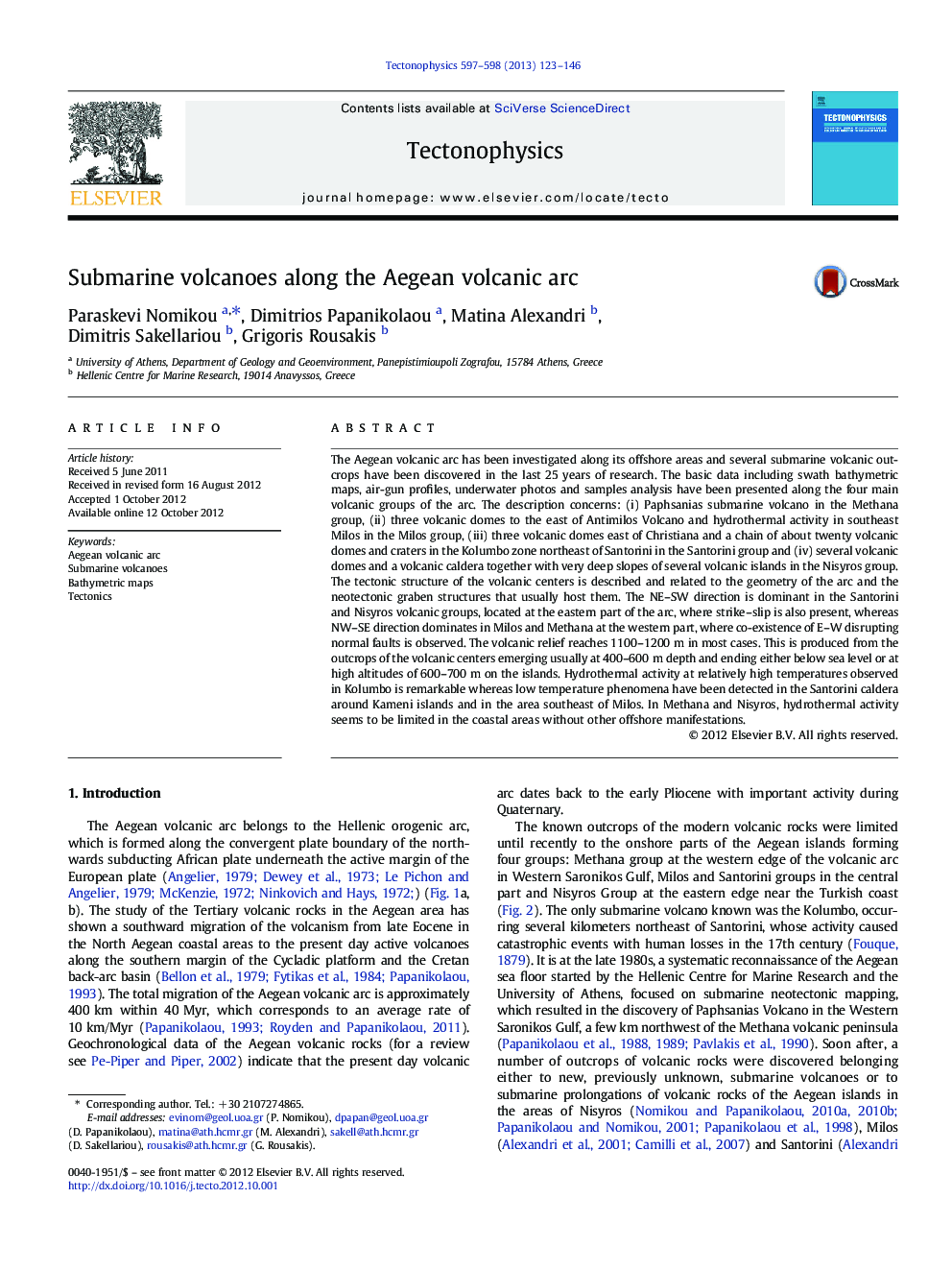| Article ID | Journal | Published Year | Pages | File Type |
|---|---|---|---|---|
| 4692403 | Tectonophysics | 2013 | 24 Pages |
The Aegean volcanic arc has been investigated along its offshore areas and several submarine volcanic outcrops have been discovered in the last 25 years of research. The basic data including swath bathymetric maps, air-gun profiles, underwater photos and samples analysis have been presented along the four main volcanic groups of the arc. The description concerns: (i) Paphsanias submarine volcano in the Methana group, (ii) three volcanic domes to the east of Antimilos Volcano and hydrothermal activity in southeast Milos in the Milos group, (iii) three volcanic domes east of Christiana and a chain of about twenty volcanic domes and craters in the Kolumbo zone northeast of Santorini in the Santorini group and (iv) several volcanic domes and a volcanic caldera together with very deep slopes of several volcanic islands in the Nisyros group. The tectonic structure of the volcanic centers is described and related to the geometry of the arc and the neotectonic graben structures that usually host them. The NE–SW direction is dominant in the Santorini and Nisyros volcanic groups, located at the eastern part of the arc, where strike–slip is also present, whereas NW–SE direction dominates in Milos and Methana at the western part, where co-existence of E–W disrupting normal faults is observed. The volcanic relief reaches 1100–1200 m in most cases. This is produced from the outcrops of the volcanic centers emerging usually at 400–600 m depth and ending either below sea level or at high altitudes of 600–700 m on the islands. Hydrothermal activity at relatively high temperatures observed in Kolumbo is remarkable whereas low temperature phenomena have been detected in the Santorini caldera around Kameni islands and in the area southeast of Milos. In Methana and Nisyros, hydrothermal activity seems to be limited in the coastal areas without other offshore manifestations.
► The submarine hydrothermal activity indicates the ongoing volcanic process both onshore and offshore. ► The volcanoes form a neotectonic graben with normal faulting, overprinted by subvertical strike–slip structures. ► The geometry of each volcanic group and the volume of the extruded rocks are different through time. ► It is interesting to compare the volcanic relief in each volcano as measured from its base and top.
